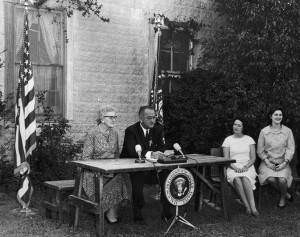Kill No Child Left Behind & Do An Autopsy
Buried in the bowels of the No Child Left Behind (NCLB) law, you will find the 1965 Elementary and Secondary Education Act (ESEA).
Over time the guiding principles of ESEA have become obscured with almost 1000 pages of ideologically and financially driven “projects.” From venture capitalists looking to pocket more public dollars through products and services, to our military gaining access to student data for easier and targeted recruiting, to the establishment of national standards without really talking about who controls them — the No Child Left Behind Acthas been the place to put the devils details. When ESEA was 35 pages long, this was not a problem.
At the heart of ESEA is Title I. Its purpose was to even the playing field for our nation’s youngest citizens.
By investing federal funds to meet the needs of “disadvantaged” children, it is known as one of many “War on Poverty” laws because the original funding formula focused on children from poverty-stricken families. That flow of funds, like the major vein coming into the heart, enabled ESEA to function.
The autopsy reveals a couple of large strictures in that main vein.
The original formula fundingused each state’s average dollar per student and allotted half again as much to focus on meeting the educational needs of those children living in poverty. The formula was quickly changed to using the national average in order to better help the “poorer states.” However in 1968, only three years after passage of ESEA, the formula funding was made “conditional upon availability of sufficient appropriations” (Congressional Quarterly.Congress and the Nation: A Review of the Government and Politics During the Johnson Years, Vol. II, 1965–1968, p710. Washington, DC: Congressional Quarterly, 1969).
Availability of federal funds for investment in education took a backseat to the funding for the Vietnam War. The law was crippled but did not die.
Through the shear fortitude of the people willing to keep the dream of equal opportunity alive, the law underwent attempts to make it right with “reauthorization” occurring every five to six years. But in 1978, the focus of funding shifted to whole schools instead of Kill No Child Left Behind & Do An Autopsy | The Crucial Voice of the People:

